#kochi prefecture
Explore tagged Tumblr posts
Text













Some of the Pokegenic photo spots placed around Shibuya, Japan right now.
In other cool things around Japan, Quagsire has been recently appointed to represent the Kochi prefecture, and even has a bus themed on it!



104 notes
·
View notes
Text

Shikoku has become a laid-back Pokémon paradise!
Congratulations to Quagsire for becoming the new ambassador to Kochi Prefecture!
#quagsire#slowpoke#pokemon#pokemon fanart#pokemon drawing#pokemon art#pkmn#pkmnart#pkmn art#pkmn fanart#pokemon blog#japan travel#japan tourism#shikoku#kochi prefecture#kagawa prefecture#enyoalkis art
32 notes
·
View notes
Text

SEA HOUSE(シーハウス), Kochi, Japan
Dine on local seafood delicacies with a view of the sparkling waters off Kochi’s coast at the Sea House, an architecturally-unique eatery perched on a cliff in eastern Kochi Prefecture.
9 notes
·
View notes
Text
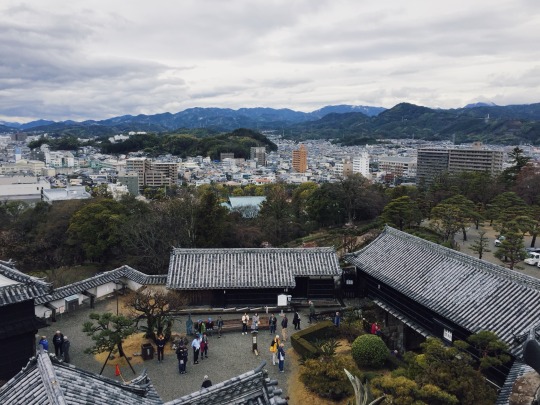

高知県
14 notes
·
View notes
Text
Seared bonito (cooking)

A famous dish of Kochi Prefecture. The surface of the bonito is roasted over a straw fire so that the surface is seared and the inside remains red. Cut this and eat it with sauce. It's exciting. I use a mixture of soy sauce, ground ginger, ground garlic, and tarragon to make the sauce.
カツオのタタキ(料理)
高知県の名物料理。カツオの表面を藁の火で炙り、表面を焼いて、中は赤いままとする。これを切り、タレを付けて食べる。豪快である。私は醤油、摺り生姜、摺りニンニク、タラゴンを混合してタレにしている。
(2023.10.18)
7 notes
·
View notes
Photo






竜とそばかすの姫 / Belle Mamoru Hosoda. 2021
Ino Station Ino, Agawa District, Prefectura de Kōchi 781-2105 Japan See in map
See in imdb
#mamoru hosoda#竜とそばかすの姫#belle#station#japan#kōchi prefecture#kōchi#kochi#ino#anime#movie#cinema#film#location#google maps#street view#2021
61 notes
·
View notes
Photo

library in Kochi Prefecture, Japan. Photography by Ryogo Urata
740 notes
·
View notes
Text
Blaze's Compendium Entry #8:Explaining the Origin of ShikiOuji
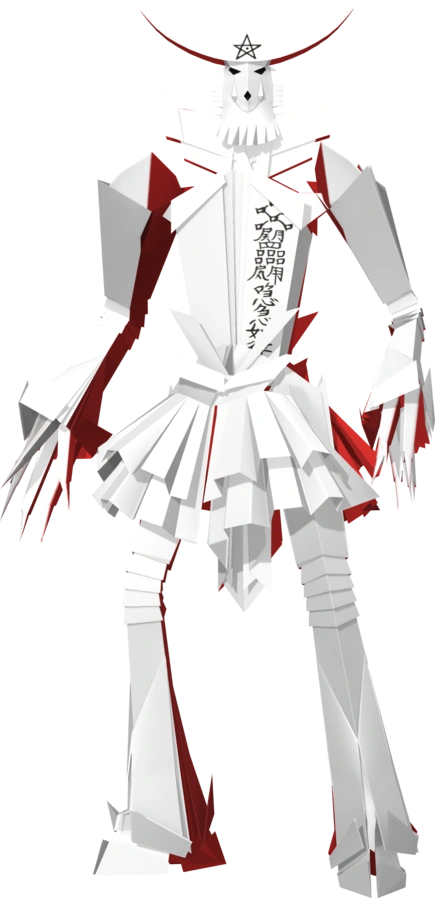
Note: This post was originally published in April 2024. However, since it is a complete research and dive into this monster, I figured out i could just repost it as a Compendium entry.
As always:
Warning: Faith and religion are important real life topics, that tackles the culture and way of life of millions of real life people. It is a cultural expression, and must be respected by all means. Here, we use a video-game ( some times) and other media series only to ignite the flame of learning about the matter, using its art when well depicted, but we do this with all due respect to the cultures we talk here, grounded by real life sources, cultures and people. And i mean this with respect. Hope you all enjoy.
I am sure that, if you played any Megaten game in the last 20 years or so, you ended up seeing this paper dude. His name is always stated as Shiki-Ouji, and he once shared the same design with the Demon called Shikigami.
The weird thing is that when researching Shikigami on my studies, I never found anything about this one so i put some detective work to find out about the origins of Shikiouji, the (yet another) dude who often repels physical damage in Megaten.
The creature is described in many of the series compendium as a powerful Shikigami, that only the most powerful Onmyoji could summon, and they have a vicious temperament.

When we talk about Shikigami, the first thing that comes to mind are paper dolls. This is no surprise, since Shikigami are summons Onmyoji binds to paper dolls or talismans, so they could interact with the physical world. This is also because paper is a very easy material to destroy, if things go south. Onmyoji are the equivalent of western sorcerer, that followed the Onmyōdō, a esoteric cosmology. It started in the 6th century in Japan as a divination practice, and evolved from there. I won't go into detail, because this is meant to be a short post. But materials about this practice are abundant on the internet.
The main concept concerning us here is the Shikigami. These are basically some kind of familiar, a spirit or demon if you want, the sorcerer could conjure to protect him or do his biding. The Cultural Alliance Brazil- Japan, which i already mentioned in other posts, states that:
''Shikigami can be Oni or demons, that should serve and protect an Onmyoji. Your abilities would be determined by the abilities of his master.
A Shikigami could assume the form of small animals, birds, etc... One Shikigami from a powerful Onmyoji could possess and control one animal. But only a real powerful Shikigami could possess a person.
When an Onmyoji is fighting another Onmyoji, they employ the use of their Shikigami. Some Onmyoji could spot the enemy Shikigami beforehand, and try to convert it to his side with magical powers. In this game, the converted Shikigami would come back to the old master, and attack with double the force. This pratice was called Shikigami Gaeshi.
Abe no Seimei is said to be the most powerful Onmyoji to ever exist. Some rumors say he had twelve Shikigami, while regular Onmyoji would rarely have more than one Shikigami at the same time.''
So, that is a rough definition of what a Shikigami is.
But, when researching this creature you would not be able to regularly find Shiki-ouji. The fastest method for him to appear, was the English Wikipedia article about Shikigami, which weirdly had this part about Shiki-ouji, but offered no source to it:

Having the kanji to Shikiouji, and some keywords, i found someone at Tumblr who asked the same question 6 years ago, in Eirikr's blog.
From there, Eirikr offered a link to a blog post writing about Izanagi Ryu Shikoku. Ryu Shikoku is an ancient folk religion and pratices from the Kochi prefecture. It is still practiced in the area to this day!
In this belief system there is the tradition of the Shiki-kui masks. Which.. bear a very uncanny resemblance to our paper guy, subject to this post:
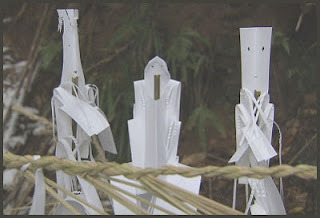
These masks would be hang above the place the ceremonies of the Izanagi Ryu take place. They would have magical powers that could repel evil spirits, and non believers from coming to the ceremony and disturbing it. They would also serve as talismans, or paper dolls, in a simmilar vein the regular Shikigami pop image you have in mind.
Since they are used to summon spirits, bind them, and as talismans, these creatures can be, technically called a Shikigami.
With this knowledge in hands, i went to the Japanese web. And sure enough, i found this site: The Nippon Foundation Library. It has an article detailing the paper talismans used by Izanagi No Ryu Onmyoji, and their meanings, powers, and also explained a bit about Shiki-Ouji!
Here is what they have to say: (Please be warned that i do not speak Japanese, and used machine translation. Any corrections are Welcome!)
Shikē Ōji is a spiritual entity invoked by the taisa during prayers for the sick and the "toriwake" ritual to expel evil spirits causing illness or calamity. Its birth is described as abnormal, and due to its excessively violent power, it has no place to reside. Usually, it is sunk in the pond of Tendō-nanta, and summoned only when needed to guard ceremonies, to pray as the guardian deity of ceremonies, or as a prayer deity of Jumon no hakase. There seem to be several types of Shikē Ōji depending on their purpose, such as Takata no Ōji for toriwake, Gotai no Ōji for prayers for the sick, and Ōtaka-shiki for insect prayers. Additionally, talismans such as Sangoku Arashiki, Chimura San Ōji, and Sakago no Ōji are handed down, and it is inferred that they were used according to the content of the prayers, although many details of their usage are unknown.
Using the powerful Shikē Ōji against humans becomes a curse. In Kochi Prefecture, "hitting a ceremony" is widely used to curse people. Many people use this term without understanding its original meaning. "Hitting a ceremony" refers to attacking someone using Shikē Ōji. While Shikē Ōji can benefit people if used for good, it can harm them if used for evil. Talismans of Shikē Ōji, possessing such terrifying power, often have several incisions on them, each containing twelve notches, giving them a rough impression. However, unlike talismans found in mountains and rivers, they do not seem to have incisions for eyes or mouths. In this regard, they are closer to the cutting style of talismans for house gods and sacred gods. Here, one can sense the emphasis on the powerful nature of Shikē Ōji's talismans while also distinguishing them from strange monsters.
So, as you can see there is some key information about the creature here. But the most important ones:
1- It is bind to a talisman, just like other Shikigami. The text here explains it is a paper talisman with notches, just like regular ones used in religious ceremonies.
2-It has a powerful and violent nature, just like the compendium often indicates in Megaten games. It seems hard to tame and use properly without getting hurt.
3-Shiki-Ouji can be powerful and violent, but it seems they dislike being used to hurt people. Instead, they are better employed to use their magic to other deeds. However if you still use them in that regard, they will most likely curse you.
4-Their talismans have twelve notches, no incision for eyes and mouth due to their aggressive nature. This would help to control their interaction with the material world.
I am sure that, if we follow this trail we will find many more sources. Going by key words i found in this text, i found many other sites and books, but since i have no time now to fall a rabbit hole, nor do i speak Japanese... That is it, i think this is a satisfactory answer to where this Megaten Demon came from!
The real forms of Shiki-Ouji
The last thing in want to talk about, is Shiki-Ouji real appearance. Since we have a seemingly wrong impression of they in Megaten, since Kaneko took some artistic freedoms.
First and foremost: From the few things i studies about Shikigami, we know they do not have a real physical form. The paper talismans are just a way to give them physical form. But it was incredibly hard to find a Shiki-Ouji talisman, which was weird because it was so distinguishable. The main reason being that: Shiki-Ouji seems not to be believed to be easy or safe to summon, and also their talismans would be destroyed asap after use.
But with the description i got, it would be this one that matches it the most:
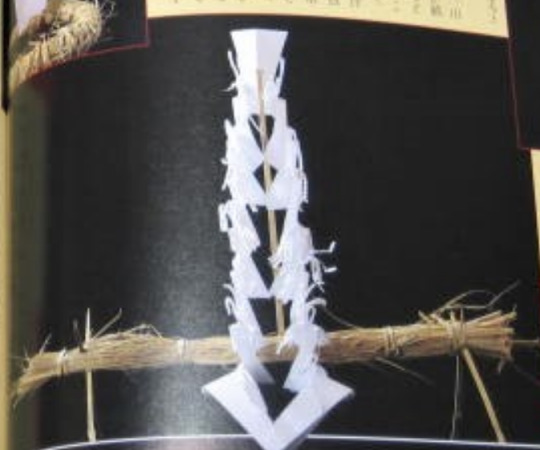
No eyes, or mouth. Twelve Notches, six from each side, and some incisions. Very similar to a regular talisman found in other types of ceremony. Just as the text suggested.
I got this picture from this book:
Tosa, Monobe Village: Shapes of the Gods
Monoba being the village where most of these rituals came from. The book is from 1999, and contains many pictures of actual talismans.
You can see that, aside from the head shape, Kaneko took some freedom with this design. The sources state that Shikiouji talismans should not have a face, nor limbs, since it was too powerful, and should have 12 notches. For some reason, Kaneko drew it in a human-like form, but the face still resembled the Shiki-kui masks. The earlier design of the demon was even more closely resembling the masks:


Shiki-ouji earlier design from Devil Summoner (1996). It was later repurposed as the demon Shikigami. It is almost an exact match to this talisman. I can not however identify the original source.
Shiki-Ouji current design by itself could have been based on this one talisman in specific, at least some parts of it like the head with horned-shaped appendages:
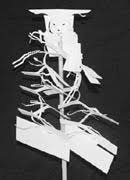
By the looks of it, its face could turn inside out, just like the Megaten Demon can do.
It was sourced by the National Museum of Japanese History, but the post went down. The low quality image of the talisman can still be seen on google, but the link is dead, unfortunately. It seems that this item is still in possession of the Museum in Japan. Kaneko could have seen it in pictures, or in person. This one seems NOT to be displaying a Shiki-Ouji thought.
Maybe the Kaneko take is that Shiki-Ouji was summoned with limbs, and facial features and became much more stronger as a result? We may never know...
And finally there is also an occult book that i found in Amazon Japan that is called: Exploring Izanagi No Ryu: ShikiOuji.
It is supposedly a manual on how to practice Izanagi no Ryu, and magics. I could not find the book online, just the summary. But it mentioned nothing about Shiki-Ouji. Probably has some sort of tutorial to summon it, in fact i was able to find many of those tutorials on the Japanese web.

Now, that is it. I think this puts to rest a little bit of mystery involving the origins of this specific demon. Kaneko sure took some freedoms, but it is still one of the more popular and recognizable characters in the series.
Final considerations:
This most likely is the answer to its origin, but i am not some sort of owner of all truths, so feel free to correct me in anything i said wrong. I am still an amateur scholar, and even if i do know a lot about mythology and ancient religions because i read many books and study a lot of hours of my days, i am by no means a specialist in Japanese Mythology specifically, specially Shikigami practices. The reason is that, i find it very difficult and time consuming to research Japanese sources, since i do not speak Japanese. I will one day, try my best since there are a lot of good Yokai to cover in future Scientific Papers.
I can, however, guarantee that i did my best possible effort in a deep search!
And i have spent a lot of time looking through pictures of Shikigami talismans, and i found some really cute. Like this one. What a whimsical little fella...

#shin megami tensei#atlus#kazuma kaneko#blazescompendium#megaten#mythology#japanese folklore#japanese mythology#shikigami#megami tensei#smt#blazescompendiumentry
74 notes
·
View notes
Text
New the perfect crime trio illustrations for the Kochi Prefectural Museum of Literature collaboration
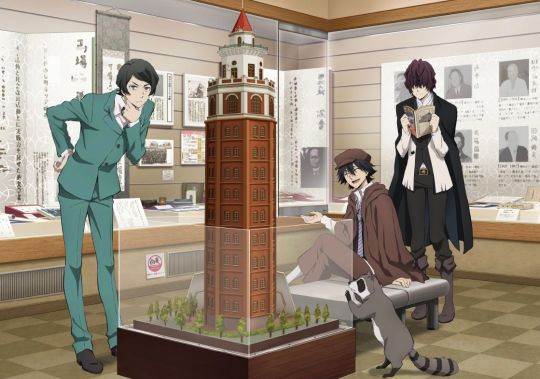
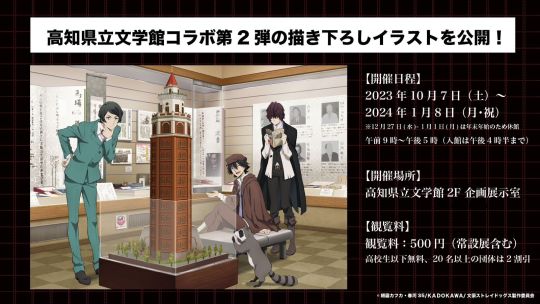
#bungo stray dogs#mushitaro oguri#ranpo edogawa#edgar allan poe#bsd mushitaro#bsd ranpo#bsd poe#bsd official art#bsd#karl#pls look at karl that raccoon is so cute
118 notes
·
View notes
Text
youtube
Just uploaded a new vlog on my YouTube channel!
Come along to Kochi Prefecture with my friends and I! Kochi welcomed us with beautiful scenery, delicious seafood, and friendly locals.
友達と行った高知旅行の動画をアップしたので是非見てください!高知県は初めてでしたが、自然も素敵でご飯も美味しくて、とっても楽しかった♪
71 notes
·
View notes
Text




Yuriko Tigra (Yuriko Tiger) Instagram post 6/23/2024
Kochi Prefecture 🇯🇵
Quando avevo preso un biglietto di “enorme fortuna” ma in realtà era “sei a un passo dalla sfiga più totale” 👌
#ユリコ・タイガー#ユリコタイガー#Yuriko Tiger#Yurikotiger#Yuriope#「エレ」#エレ#「ERE」#Ere7rock#Ere#ERELAST#Psykhere#EronoraMono#Eredalle#Yuriko tiger Is Not Mai Waifu!#Fan Blog#Fan Page#Instagram#Meta
8 notes
·
View notes
Text
A List of Hiromasa's Direct Relatives + Random Facts
Saw some posts wondering about Hiromasa's other family, which prompted me to write this up. Info is taken from documents you can find in publicly accessible archives, albeit only in Japanese.
The Guy Himself 源博雅 - Minamoto no Hiromasa [918 - 980] Rank: Junior fourth rank, lower grade (later third rank) Position(s): Captain of the Right Division of Middle Palace Guards (右兵衛督) Middle Captain of the Right Division of Inner Palace Guards (右近衛中將) Ancillary Master of the Empress Dowager's Household (皇太后宮権大夫) When he was 17, he was removed from royal succession and bestowed the title Minamoto Ason*. Apart from the flute, he was also skilled with the biwa, koto and hichiriki. There are numerous stories about him and his incredible musical skill, which I will hopefully cover in a separate post some day. Maybe. He is also known as Hakuga no Sanmi (博雅三位) in reference to his final rank and Lord Long Autumn (長秋卿) in reference to his final position (the Chinese name for the Empress Dowager's household is "Long Autumn") *The Japanese term for this process is shinsekikouka (臣籍降下) This was done because emperors often had many children and under the Ritsuryo legal system, royalty had to be given a certain income, so ennoblement was a way of saving money. The first title of Minamoto Ason was given by Emperor Saga, who had 49 children.
Grandfather 醍醐天皇 - Emperor Daigo [884 - 930] Was emperor from 897 to 930. He actually abdicated the throne after falling ill in 930 and became a monk shortly before he died. He had 36 children across 21 different consorts.
Father 克明親王 - Prince Yoshiakira/Katsuakira [903 - 927] The first son and crown prince of Emperor Daigo. Hiromasa would have been 9 years old when he died.
Mother 藤原時平の娘 - Daughter of Fujiwara no Tokihira Fujiwara no Tokihira was the Minister of the Left (左大臣) for Emperor Daigo. Women often did not have their names recorded, instead being referred to by the title of their fathers or by their sons (e.g Murasaki Shikibu, with her father having a position in the Shikibu-sho (Ministry of Ceremonial Affairs) and Mother of Michizane, the author of Kagero nikki.)
Siblings Most of the info here is from the Honcho Koin Jounroku (本朝皇胤紹運録) (go to page 53) 源正雅 - Minamoto no Tadamasa (younger brother) Rank: Junior fourth rank official, lower grade Position(s): Ancillary Provincial Governor of Tosa Province (土佐権守) Tosa Province is now known today as Kochi Prefecture. 源清雅 - Minamoto no Kiyomasa (younger brother) Rank: Junior fourth rank official, lower grade Position(s): Chamberlain in the Ministry of Central Affairs (侍従) It's unclear whether Tadamasa was older than Kiyomasa or the other way round. 源助雅 - Minamoto no Sukemasa (younger brother) Rank: Junior fourth rank official, lower grade. Position(s): Master of the Western Offices (右京大夫) A lot of websites I've checked claim that Hiromasa also had a sister by the name of Kenshi (妍子女王), but I cannot for the life of me find and actual source for this claim. If you have any info, please tell me!
Children According to the Dai Nihon Shiryo, Hiromasa had four sons. 源信貞 - Minamoto no Nobusada Rank: Junior fifth rank, higher grade Position(s): Lieutenant of the Left Division of Middle Palace Guards (左兵衛尉) A flute player, like his father. He appears briefly in the Kaichikusho, a book on flute music written by musician Oga no Koresue. (go to page 20) 源信明 - Minamoto no Nobuakira Rank: Junior fifth rank, higher grade Position(s): Treasury Senior Assistant Minister (大蔵大輔) Also a known talented biwa player, like his father. 源信義 - Minamoto no Nobuyoshi Rank: Junior fifth rank official, higher grade Position(s): Chief Pharmacist (典薬頭) Chief Court Musician (雅楽頭) Once again taking after his father, being an excellent biwa and flute player. He is the author of the Shinkasho (神歌抄), the oldest surviving manuscript of kagura music. He and his older brother Nobuakira were known for playing music together. 源至光 - Minamoto no Yukimitsu Rank: Junior fifth rank official, lower grade Position(s): Provincial Governor of Hoki Province (伯耆守) Hoki Province is now known today as the western half of Tottori Prefecture. Couldn't find any info on him being a musician, but knowing his family, it wouldn't be out of the question.
#minamoto no hiromasa#heian period#general disclaimer that many of these documents are recounts so we can never be too sure#we're talking century old copies of documents that are centuries older than that#also there are SO MANY POSITIONS IN THE RITSURYO SYSTEM#i've translated them in this case but in many situations you'll probably see them just left in japanese (e.g. sadaijin=minister of the left#ALSO ALSO while i have listed the roles i do not actually understand what they all entail#feel free to correct me on anything because i am not in fact fluent in old japanese#i'm just very persistent
17 notes
·
View notes
Text











Hospitality Department (2013)
Fumitaka (Ryo Nishikido) is a civil servant working at Koichi Tourism Board who struggles to promote the prefecture to tourists. Through the critique of a tourism ambassador, Kyosuke (Kora Kengo), Fumitaka eventually hires a young blood, Taki (Maki Horikita) and approach an experienced advisor, Kazusama (Eiichiro Funakoshi).
Things began to change within the department as the revitalization project seems to be hopeful and promising, until they encounter obstacles in the form of limited government budget and strong opposition from the top decision makers who are resistant to change. But the newly formed team refuses to give in.
youtube
A relaxing slice of life movie to watch if you love a slow pace film against the backdrop of the beautiful and peaceful countryside.
#hospitality department#Kencho Omotenashi Ka#ryo nishikido#nishikido ryo#maki horikita#horikita maki#japanese movie#j movie#jmovie#japan#kochi prefecture#kochi castle#shikoku#japan countryside#rural japan#movie aesthetic#Youtube
9 notes
·
View notes
Text


A very satisfying meal.
4 notes
·
View notes
Text
Illustration drawn in collaboration with the Kochi Prefectural Museum of Literature

43 notes
·
View notes
Photo





竜とそばかすの姫 / Belle Mamoru Hosoda. 2021
River 158 Oharacho, Kochi, 780-8031, Japan See in map
See in imdb
#mamoru hosoda#竜とそばかすの姫#belle#river#anime#kochi#kōchi prefecture#bridge#movie#cinema#film location#location#film#google maps#street view#2021
68 notes
·
View notes